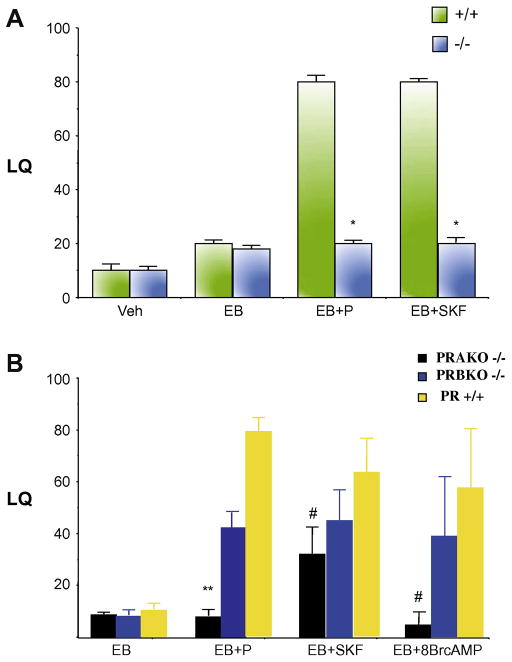Fig. 3.
Ligand-dependent and –independent activation of nuclear PRs in female reproductive behavior in mice. (a) Ovariectomized, wild type (+/+) and homozygous (−/−) PR mutant mice were primed with estradiol benzoate (EB), followed by intracerebroventricular administration of progesterone (P) or D1 agonist, SKF38393 (SKF) 48 h later. Female receptive behavior in the presence of a male mouse was quantitated and represented as lordosis quotient (LQ). Statistically significant differences were seen in P- and SKF-facilitated lordosis responses of the −/− compared to their +/+ littermates (*P < 0.001). Adapted from Mani et al [165]. (b) Ligand dependent- and -independent induction of sexual receptivity in PR isoform-specific null mutant mice. Ovariectomized PRAKO−/−, PRBKO−/− and PR+/+ mice were primed with EB for 48 h, followed by icv administration of progesterone (P), dopamine D1 agonist SKF 81297 (SKF) or 8-Bromo-cAMP (8-Br-cAMP). P-facilitation of lordosis response was significantly lower in PRAKO−/− null mutants compared to the wild type animals (**P < 0.05). Statistically significant differences (#P < 0.01) were observed in SKF- and 8-Br-cAMP-treated animals compared with EB-treated controls. Adapted from Mani et al [168].

